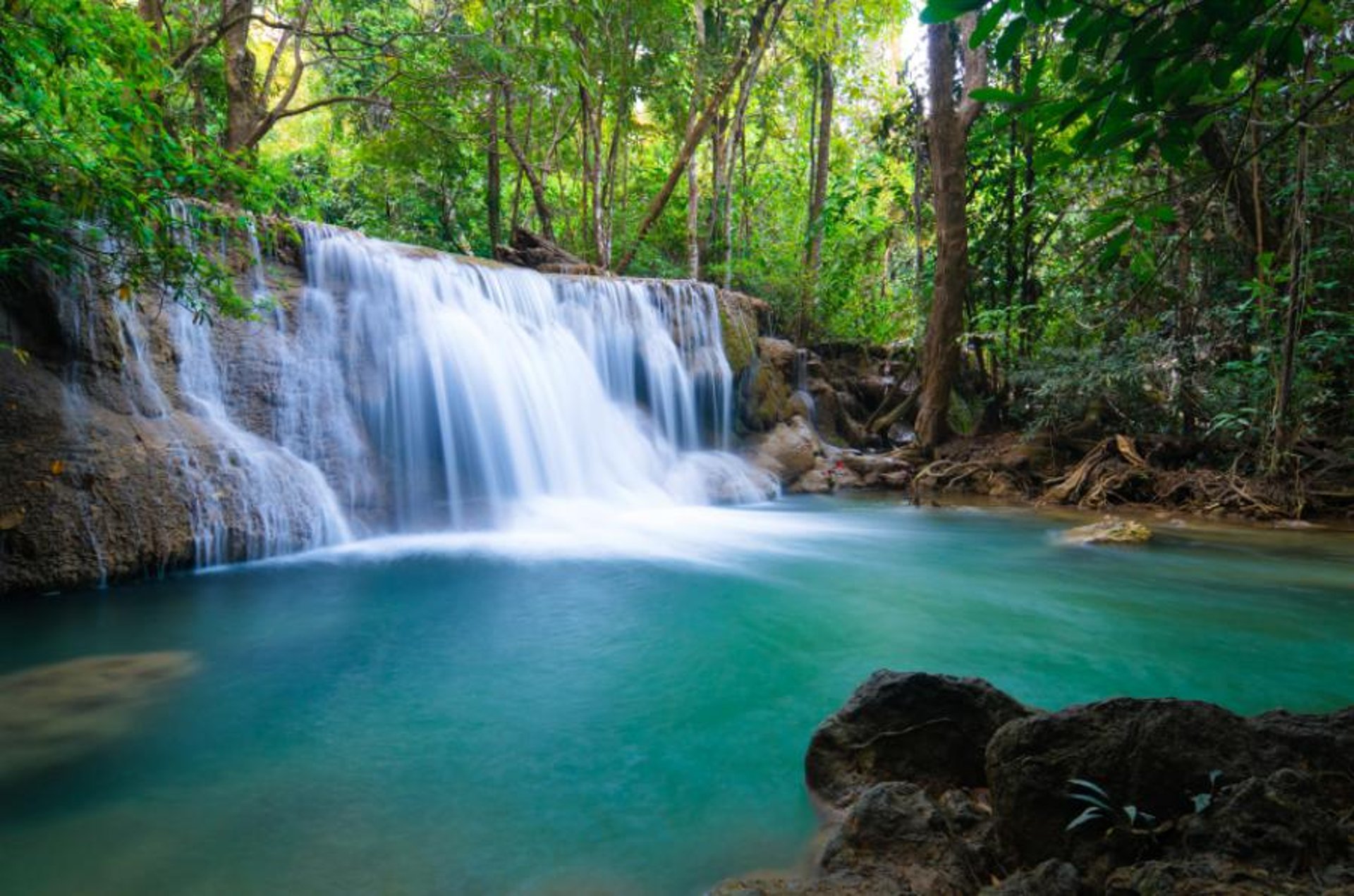
Kanchanaburi National Park
and its Dark History
You didn’t come this far to stop
Episode 16: Kanchanaburi National Park and its Dark History
Kanchanaburi National Park is a significant part of the Weary Dunlop Trail, as it was once home to several POW camps during World War II. The park offers a poignant reminder of the sacrifices made by prisoners of war and the dark history that unfolded within its boundaries
DUNLOPS RESEARCH TRIP 1WEARY DUNLOP TRAILIN THEIR FOOTSTEPS BLOGINSIGHTS WW2 HISTORY
Toursofwar.com
1/30/20244 min read
St Andrews Research Team embarked on a journey
The St Andrews Research Team embarked on a journey along the Weary Dunlop Trail, a path that led them to the Kanchanaburi National Park in Thailand. This park holds significant historical importance as it was once home to several POW camps during World War II. The team's research focused on the experiences of prisoners of war, particularly Sir Edward "Weary" Dunlop, a renowned Australian surgeon who played a crucial role in the care of POWs.
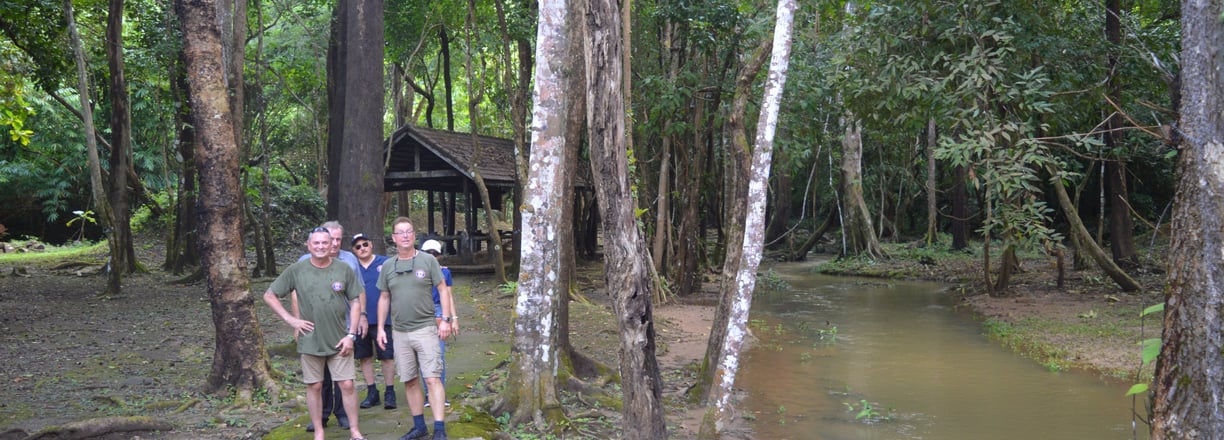

POW Camps in the National Park
Kanyu River Camp: Located near the park's entrance, this was one of the first POW camps established in the area. The prisoners were forced to work on the construction of the Thai-Burma Railway, also known as the "Death Railway," under harsh conditions.
Hintok Mountain Camp: Situated near the park's central area, this camp was known for its harsh conditions and high mortality rate. The prisoners were subjected to brutal treatment by their Japanese captors and suffered from malnutrition, disease, and exhaustion.
Hintok River Camp: Located near the park's southern area, this was another significant POW camp in the park. The prisoners were forced to work on the construction of the railway, often in the scorching heat and with limited access to food and water.
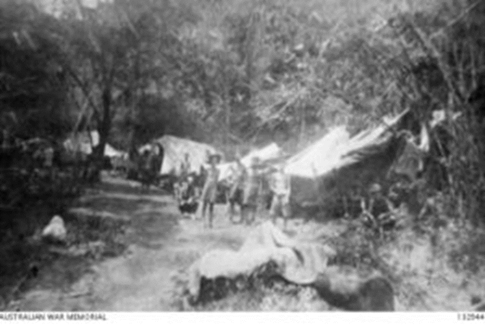

Dunlop Force
Dunlop Force was a group of nearly 900 Australian POWs under the command of Lieutenant-Colonel Edward "Weary" Dunlop. They were the first Australians to arrive in Thailand and worked on the construction of the Thailand-Burma Railway.
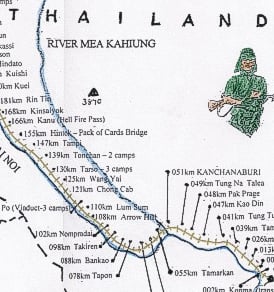

Locations
Kanyu River Camp: This camp was where Dunlop Force was initially located.
Hintok Mountain Camp: This camp was where Dunlop Force worked on cuttings and the Three Tier Bridge.
Hintok River Camp: This camp was another significant site for Dunlop Force.
Tha Sao Camp: This camp was where Dunlop spent time as a surgeon.
Chungkai Camp: This camp was where Dunlop also spent time as a surgeon.
Nakhon Pathom Camp: This camp was where Dunlop spent time after moving from Chungkai.
Hellfire Pass Camp: This camp was a significant site for the construction of the Thailand-Burma Railway and was where Dunlop's ashes were scattered in 1994
POW in Thailand
Dunlop Force and Australian Troops
Dunlop Force
Number of POWs: 895
Deaths: 66
Commander: Lt Col Edward Dunlop
Worked on: Cuttings and embankments
Camp: Hintock Jungle camp and later Hintock River camp
Australian Troops
Number of POWs: 13,004
Deaths: 2,802
Camps: Konyu Camp, Hintok Mountain Camp, and other camps along the railway
Australian Medical Officers
Number of POWs: 230
Deaths: 50
Force: Medical Party
Worked on: Medical duties
Camp: Various camps along the railway
Australian Officers
Number of POWs: 15
Deaths: 0
Force: Dunlop Force
Worked on: Medical duties
Camp: Hintock Jungle camp and later Hintock River camp
Weary Dunlop's Hospital
Sir Edward "Weary" Dunlop, a renowned Australian surgeon, was in charge of the hospital at the Kanyu River Camp within the national park. Dunlop is revered in Australia for his self-sacrifice, courage, and compassion while caring for the prisoners of war. He worked tirelessly to provide medical care and comfort to the sick and injured prisoners, often risking his own life to protect them from further harm.


Natural Beauty and Tranquility
Erawan Waterfall: A stunning seven-tiered waterfall with bluish-green water, offering a serene and picturesque setting for visitors to enjoy.
Sai Yok National Park: A park known for its lush forests, diverse wildlife, and scenic views of the River Kwai.
Pha Tad Waterfall: A waterfall with a sacred Buddha statue, located near the infamous "Death Railway" where Allied prisoners of war were forced to work under harsh conditions.
Tham Phu Wa Cave: A cave temple with a serene atmosphere, perfect for meditation and relaxation.
Giant Raintree (Monkey Pod Tree): A massive tree with a unique shape, offering a glimpse into the region's natural history.
Srinagarindra National Park: A park featuring diverse flora and fauna, as well as historical sites related to the construction of the Death Railway.
These attractions offer a mix of natural beauty, history, and cultural significance, making Kanchanaburi National Park a must-visit destination for anyone interested in exploring the best of Thailand.
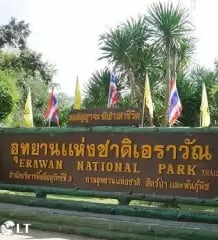

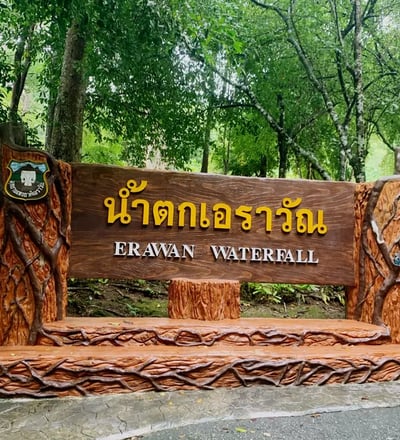

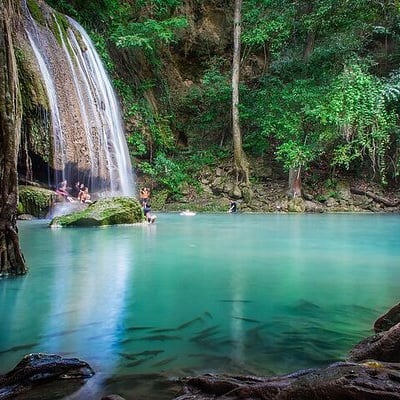

Kanchanaburi National Park is a treasure trove of natural beauty and historical significance. The park is home to several main attractions that draw visitors from around the world. Here are some of the most notable ones:
Beyond its historical significance, Kanchanaburi National Park offers visitors a chance to immerse themselves in the beauty of nature. From the majestic waterfalls to the verdant forests and diverse wildlife, the park provides a peaceful retreat for those seeking solace and connection with the natural world.
